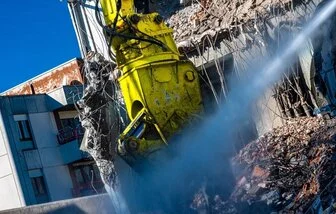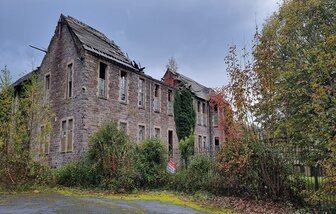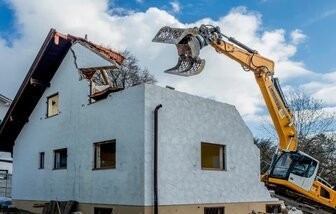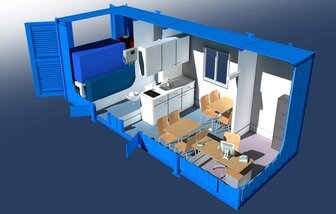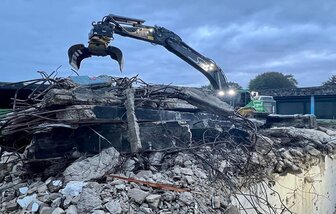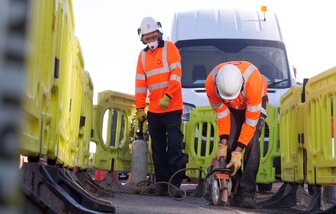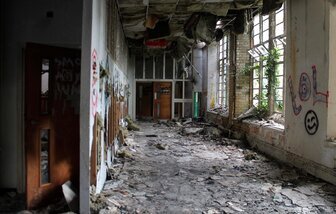Understanding Asbestos: Types, Dangers, and Locations
Understanding the dangers of asbestos is crucial for protecting ourselves and others from its harmful effects. Asbestos-related diseases can have devastating consequences, and it is important to take necessary precautions when dealing with materials that may contain asbestos. If you suspect the presence of asbestos in your home or workplace, it is recommended to seek professional assistance for proper testing and safe removal, ensuring the health and safety of everyone involved.
Steps to take to safeguard your demolition site
Learn about the dangers of asbestos, its different types, and where it can be found. Understand the health risks associated with asbestos exposure and the importance of proper testing and safe removal. Protect yourself and others from the harmful effects of asbestos.
Asbestos is a naturally occurring mineral that has been used in various industries for its desirable properties such as heat resistance and durability.
However, extensive research has shown that asbestos poses significant health risks, leading to its ban in many countries. In this article, we will explore what asbestos is, why it is dangerous, the different types of asbestos, and where it can be found.
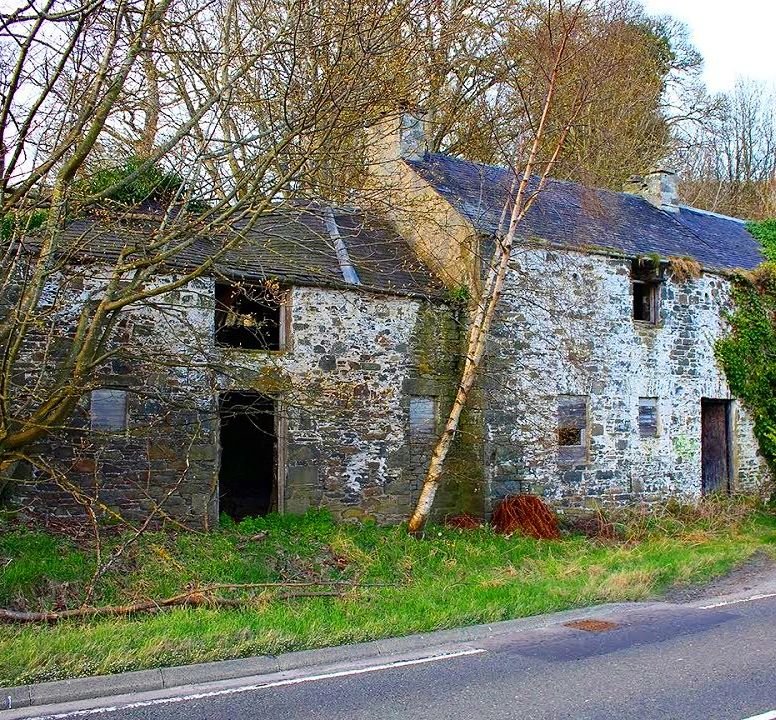
Asbestos is a group of six naturally occurring minerals that are composed of long, thin fibers. These minerals are classified into two categories: serpentine asbestos, which includes chrysotile, and amphibole asbestos, which includes crocidolite, amosite, anthophyllite, tremolite, and actinolite. Chrysotile, also known as white asbestos, is the most commonly used type and accounts for about 90% of asbestos found in buildings.
When asbestos-containing materials are disturbed, such as during construction or demolition work, tiny asbestos fibers are released into the air. These fibers can be easily inhaled or ingested, and once inside the body, they can cause serious health problems. The inhalation of asbestos fibers has been linked to diseases such as asbestosis, lung cancer, and mesothelioma, a rare and aggressive form of cancer.
Asbestosis is a chronic lung disease that occurs due to the scarring of lung tissue caused by asbestos fibers. Symptoms of asbestosis include shortness of breath, coughing, and chest pain. Lung cancer associated with asbestos exposure is similar to lung cancer caused by smoking and may develop many years after the initial exposure.
Mesothelioma is a cancer that affects the lining of the lungs, chest cavity, or abdomen. It has a long latency period, often taking 20 to 50 years to develop after asbestos exposure. Unfortunately, mesothelioma is usually diagnosed at an advanced stage, making treatment options limited and prognosis poor.
As mentioned earlier, there are two main types of asbestos: serpentine and amphibole. Chrysotile, a serpentine asbestos, is the most commonly used type and is often found in roofing materials, insulation, and brake linings. Amphibole asbestos, on the other hand, has straight, needle-like fibers and is considered more hazardous. The amphibole asbestos types, including crocidolite and amosite, were commonly used in construction materials such as cement sheets and pipe insulation.
Asbestos can be found in various products and materials, particularly those manufactured before the 1980s when its use started to decline. Some common places where asbestos may be present include:
- Roofing materials, such as shingles and corrugated sheets
- Insulation materials, including thermal insulation, pipe insulation, and sprayed-on insulation
- Textured coatings, such as popcorn ceilings and decorative paints
- Fireproofing materials, such as fire-resistant drywall and cement boards
- Flooring products, including vinyl tiles and adhesives
- Automotive parts, such as brake pads and clutch facings
- Industrial products, such as gaskets, seals, and insulation for boilers and furnaces
It is important to note that asbestos-containing materials that are intact and undisturbed pose minimal risk. However, when these materials are damaged, deteriorated, or disturbed, such as during renovation or demolition, they can release asbestos fibers into the air, increasing the risk of exposure.
Introduction
Demolition projects are a common occurrence in the construction industry. Whether it’s the demolition of an old building to make way for new construction or the removal of a structure that is no longer safe, proper planning and execution are essential. One crucial factor that needs to be considered during demolition projects is the presence of asbestos.
Understanding Asbestos
Asbestos is a naturally occurring mineral that was widely used in construction materials due to its strength, durability, and fire-resistant properties. It was commonly found in insulation, roofing materials, flooring tiles, and other building products. However, it was later discovered that prolonged exposure to asbestos fibers can lead to serious health issues, including lung cancer, mesothelioma, and asbestosis.
The Dangers of Asbestos Exposure
When asbestos-containing materials are disturbed or damaged during demolition activities, microscopic asbestos fibers can become airborne. These fibers can then be inhaled by workers and bystanders, posing a significant health risk. The effects of asbestos exposure may not become apparent for many years, making it a silent and deadly threat.
It is important to note that even a small amount of asbestos can be hazardous. Therefore, it is crucial to identify and handle asbestos-containing materials appropriately during demolition projects to protect the health and safety of everyone involved.
Identifying Asbestos
Prior to any demolition project, a thorough asbestos survey should be conducted to identify the presence of asbestos-containing materials. This survey involves inspecting the building and collecting samples for laboratory analysis. Trained professionals should perform these surveys to ensure accurate results.
Asbestos-containing materials can be found in various forms, such as pipe insulation, sprayed coatings, cement products, and floor tiles. It is not always easy to identify asbestos visually, as it may be mixed with other materials. Therefore, relying on a professional asbestos survey is crucial to ensure the safe handling of materials during demolition.
Safe Asbestos Removal
If asbestos-containing materials are identified during the survey, proper removal procedures must be followed. Asbestos removal should only be carried out by licensed and trained professionals who have the necessary expertise and equipment to handle the hazardous material safely.
The removal process typically involves sealing off the work area, wearing appropriate personal protective equipment (PPE), and using specialized tools to carefully remove the asbestos-containing materials. The materials are then properly sealed and disposed of in accordance with local regulations.
Preventing Asbestos Exposure
While asbestos removal is crucial, prevention is always better than cure. It is essential to consider asbestos management during the planning stages of a demolition project. This includes:
- Conducting an asbestos survey before any demolition work begins
- Implementing proper containment measures to prevent the release of asbestos fibers
- Providing adequate training and PPE to workers
- Regular air monitoring to ensure the safety of the work environment
By taking these proactive measures, the risk of asbestos exposure can be minimized, ensuring the health and safety of all individuals involved in the demolition project.
Conclusion
Asbestos in demolition projects poses a significant health risk to workers and bystanders. Proper identification, safe removal, and preventive measures are essential to protect against asbestos exposure. By prioritizing asbestos management, the construction industry can ensure the safety and well-being of its workers and the surrounding community.
What is demolition?
The process involves Rotational hydraulic shears and rock-beakers attached to specialist excavators are also used to cut or break through wood, cut steel and crush concrete which reduces the structure to a rubble
Securing your demolition project
Implementing robust security measures, such as perimeter fencing, access control, signage, surveillance systems, and proper lighting, can significantly reduce the
Demolition hazards
If a demolition project is well planned the risks of injury and death can be minimised. It should be emphasised that the planning and execution of a demolition project should only be done by appropriately competent persons.
Notification of intended demolition Section 80
If your considering demolishing an existing building you will need to submit a demolition, Section 80 Notice together with your (RAMS) to your local authority according to section 80
Welfare facilities
Welfare facilities are an essential component of any demolition project. By providing suitable facilities, employers prioritize the well-being and safety of their workers, leading to increased
Demolition plant
Demolition plant is essential in the construction industry, as they ensure the safe and efficient removal of structures. By following strict guidelines and regulations, these plants prioritise safety, efficiency, and sustainability.
Utilities disconnection
Terminating utilities at the boundary is a critical step in the demolition process. It ensures the safety of the demolition crew and the surrounding environment, helps comply with regulations, prevents damage to utilities
Internal soft strip
Soft strip demolition is a crucial process that involves the removal of the internal structure of a building, making it ready for demolition or refurbishment. This process includes the careful removal of various materials.
Planning your demolition project
Learn how to create an effective demolition plan for your construction project. This comprehensive guide covers the key steps, including site assessment, hazard identification, safety measures, waste management, and more.
Managing asbestos
Learn about the dangers of asbestos, its different types, and where it can be found. Understand the health risks associated with asbestos exposure and the importance of proper testing and safe removal. Protect yourself and others from the harmful effects of asbestos.
Dealing with waste
Learn about waste management practices in demolition projects and the legal requirements that must be followed. Understand the types of demolition waste, effective waste management practices, and the laws and regulations governing waste management
Ready to start your project ?
Let's Work Together
Please complete the form below and someone from the Total team will be in touch.

